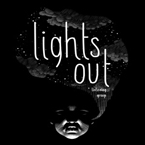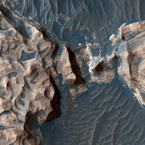Dogs Bark Far Away
Dogs Bark Far Away
Dogs Bark Far Away is a 10:00 sound art work that explores the impact of
human-generated noise on nature. It considers that human sounds may overpower natural
sounds, but not displace them. The natural sounds remain, if we know how to listen for them.
Exhibitions
 Lights Out Listening Group
Lights Out Listening Group
Lights Out Lockdown Edition 3
Juried exhibition, international
Glasgow, Scotland
29 July 2020
Event program
Lights Out Listening Group normally takes place in the Old Hairdressers Shop, in Glasgow, but due to the COVID pandemic this listening event was held online, at Lights Out Listening Group, mixlr website.
 Cities and Memories
Cities and Memories
Sounding Nature project
Juried exhibition, international
Oxford, England
November 2018
Event website
Press
Sounding
Nature Hits the Headlines
Interviews with Stuart Fowkes, Cities and Memories founder, on BBC Radio,
London, England.
Background
I created and submitted Dogs Bark Faraway in response to an international open call for submissions to Sounding Nature, a project of Cities and Memories, a global collaborative field recording and sound art project based in Oxford, England. The theme of Sounding Nature was to consider the impact of human-generated noise on nature, and how sound should be part of conservation debates and policies.
Created and curated by Stuart Fowkes, Sounding Nature was the first worldwide, collaborative artistic reflection on the natural environment. The project challenged sound artists to reimagine original field recordings contributed by other sound artists. Two hundred fifty artists, from fifty five countries, reimagined and remixed almost five hundred sounds to consider sound and conservation.
Metadata
Object: Sound art
Format: Audio file
Bit Rate: 356kbs
Duration: 10:00
Created: 2018
Creator: John F. Barber
Original/Edited Files Available: Yes
Rights and Status: Copyrighted, all rights reserved. Available for broadcast, installation,
exhibition, and/or publication with permission.
Image: Uplifted Blocks of Light-Toned Layered Deposits, detail from image
acquired on April 1, 2018, by NASA's Mars Reconnaissance Orbiter (MRO) shows Aram Chaos, a
280 kilometer-diameter ancient impact crater that lies within in the Southern Highlands of
Mars. Uplifted blocks of light-toned layers, composed largely of the iron-oxide hematite and
water-altered silicates, indicate that this crater once held a lake. Credit:
NASA/JPL-Caltech/Univ. of Arizona. Source: NASA
Mars Exploration Image Gallery. Status: Public Domain.
Artist Statement
Dogs Bark Far Away considers that human sounds may overpower natural sounds, but not displace them. The natural sounds remain, if we know how to listen for them.
Sounding Nature challenged sound artists to reimagine original field recordings contributed by other sound artists. My work, Dogs Bark Far Away, samples a recording by Noé Mignard of dogs barking in a forest in the Rhone-Alpes region of southern France.
On first listening, Mignard's recording inspired me as a liminal listening experience between two worlds. I wanted to explore the idea of liminal moments and listening further, specifically within a day-in-the-life context. The opening sonic sequence of Dogs Bark Far Away represents sleep and dreams, themselves liminal moments, often unsettling, and including sound. At the moment between waking and dreaming, ascending from the sub-conscious of sleep, dogs are heard barking. I sampled my own soundscapes and field recordings to represent movement throughout one's day, from the relative quiet peace of early morning, through the increased noise associated with work and a busy day, and concluded with coming of evening and the returning prominence of the natural soundscape.
Specifically . . . A river flows through a woodland. Birds call, as do wolves. A rattlesnake is startled in the foreground. Scrub Jays scold from the sides of the sound stage. In the distance, a woodpecker is heard, a soundmark. A moose walks through water, which, splashing, transitions into footsteps in a damp tunnel passage. The impact of anthropogenic sounds almost drowns out the natural sounds, but only temporarily. The sound of the river, now more distant, returns, along with wind in tall grass. A flock of geese pass overhead. Then, at first faintly but slowly becoming more pronounced, sounds of electromagnetic radiation, surrounding us as invisible broadcasts of ambient music. The natural sounds remain, if we know how to listen for them. And when heard, these natural sounds are quite inspiring.
At conclusion, Mignard's field recording is again sampled. Dogs bark far away.